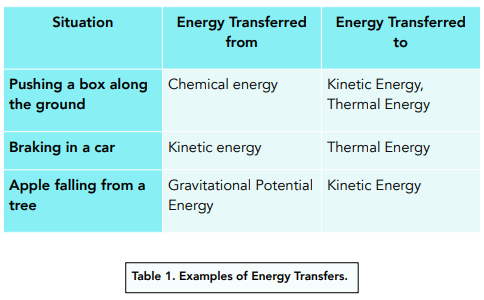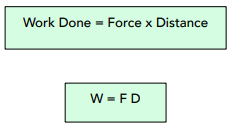Work Done (GCSE Physics)
Work Done
Forces and Work
Work Done
- Work is the transfer of energy. Work done is simply another way of saying that energy is transferred. The energy can be transferred from one store to another, such as chemical energy to kinetic energy in Fig 1.

Energy Transfers
Here are some examples of energy transfers. In each situation, one type of energy is transferred into other type(s) of energy.

Forces Doing Work
Resultant forces do ‘work’ to move objects. When a resultant force acts on an object though a distance, two key things happen.
- The force does work on the object. Remember, work is the transfer of energy.
- The object will move. Due to the transfer of energy (work), the object will move.
Calculating Work Done
Formula for Work Done
We can calculate work done using the following formula:

*Distance is the distance moved along the line of action of the force
Where:
- Work done (W), is in Joules, J
- Force (F), is in newtons, N
- Distance (s), is in metres, m
Units of Work
- Work is measured in joules. As previously mentioned, the measurement unit of work is called a joule. The symbol to represent the joule is simply the capital letter ‘J’.
- 1J of work involves a force of 1N executed over 1m. There is a specific definition that you need to memorise in relation to joules:
- One joule of work is done. This occurs when a force of one newton caused a displacement of one metre.
- Joules can be expressed as newton-metres. One newton-metre (Nm) is equal to one joule (J). Here’s how it works:
- Look at the formula for work done. As seen in the previous section, the formula for work done is:
Work done (in Joules) = force (in Newtons) x distance moved (in Metres) - Look at the units of the formula. Ignoring the rest of the formula, only focus on the units. This will leave you with the following:
Joules = newtons x metres (J = N x m) or in other words, Joules = newton-metres (J = Nm).
Again, we can refer to the formula for work done. This tells us that when we do 1J of work, we will have moved an object for a length of 1m, using a force of 1N. (1x 1 = 1)





Still got a question? Leave a comment
Leave a comment